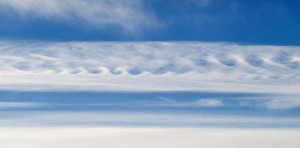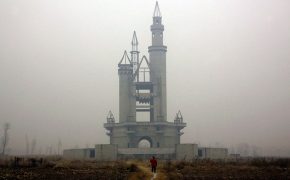Kelvin-Helmholtz clouds (DI01442), Photo by Carlye Calvin
Kelvin-Helmholtz clouds resemble breaking waves in the ocean. They are usually the most developed near mountains or large hills. Wind deflected up and over a barrier, like a mountain, continues flowing through the air in a wavelike pattern. Complex evaporation and condensation patterns create the capped tops and cloudless troughs of the waves. In this slide, the wind is blowing from right to left.














